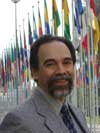2005
|
|
| Case
studies |
| |
 |
Kenyan droughts:
a community based approach with Microcredits.
Jaime Duran, Senior Grant Manager, Africa Department, International Federation
of Red Cross. |
| |
Kenya suffers from regular extreme weather events which exacerbate
rural poverty, with devastating impact on pastoralists and
subsistence farmers in the arid and semi arid regions of the
country. In the last decade alone, drought periods in 91/92,
95/96, and 98/2000, and devastating floods in 1997/98 and again
in 2002 in different parts of the country have been recorded.
These phenomena have had the cumulative effect of reducing
household food availability, purchasing power, and coping capacity,
impoverishing the rural population.
|
| |
|
 |
Microfinance and disaster preparedness: an innovative approach
for housing preventive reinforcement against cyclone and flood
damages, Viet Nam |
| |
Over the past decade, Viet Nam has been emerging from years of
poverty. Economic reforms have had a largely positive effect on
many families, whilst many activities are increasingly moneterised.
This growth and change is vital if families and the community are
to achieve more stable and better living conditions. In turn, the
improvement of family economies is vital for local and regional
development. But the often-tenuous improvement in family and commune
conditions is frequently eradicated by the destruction caused by
the annual round of storms, typhoons and flooding. |
| |
|
 |
Microfinance for Disaster Risk Management in Bangladesh
By Krishna S. Vatsa |
| |
Microfinance
programs are discussed frequently in the context of income generation,
productive investment and poverty alleviation. It has become
a very important institutional channel of providing financial
services to the poor, who lack access to traditional financial
institutions. Beginning with non-collateral credit, the ambit
of microfinance programs has expanded to include savings and
insurance as well. Many of these programs use social mechnanisms,
such as group-based lending, to reach the poor and other groups,
especially women.
While
the jury is still divided on the impact of microfinance on
poverty alleviation, its role in risk management and vulnerability
reduction has been acknowledged more conclusively. Zeller (2001)
identifies two principal pathways through which access to financial
services can help the poor to manage their risks and smooth
their income and consumption. Pathway 1 leads to income smoothing
through
ex ante measures. It involves the provision of credit and savings
services through which households can raise finance to enhance
the level of the household’s productive capital and smooth
income. Pathway 2 leads to consumption smoothing through provision
of consumption credit, withdrawal of savings, and insurance
claims. Consumption smoothing has been shown to be the main
objective
of household participation in microfinance program in a survey
of 1800 beneficiaries conducted in Bangladesh (Pitt and Khandker,
1998; Morduch, 1999).
|
| |
|
 |
A Road Towards Building Disaster Resilient Communities |
| |
“We need to organize a cooperative to help us collectively
address our needs when crisis occur” said Petronilo Baes,
an elder in Talumpok East, a rural village in Batangas City, south
of Manila, Philippines. His sentiment was shared by many other
farmers in the village. This was the beginning of the Talumpok
Silangan Multipurpose Cooperative (TASIMPCO), which was organized
on May 1, 1988. An initial meeting of fifty village residents,
chaired by a development worker , led to a decision to organize
themselves into a cooperative. They pledged in writing to pay a
share of Php100 and a membership fee of Php20, or Php 120.00 per
person ($2.10). A total of Php5,000 ($92.5) was collected in a
matter of days and this amount was used to buy consumer goods.
Then, they registered the cooperative to the Security and Exchange
Commission to legitimize its existence. |
| |
|
 |
The Experience
of SEWA |
| |
This paper explores the Self Employed
Women’s
Association’s (SEWA) experience using microfinance and safety
nets to increase disaster resilience among the rural poor of Gujarat,
India. Many existing financial tools and safety nets play an important
role in reducing the vulnerability of hazard-prone populations,
particularly the poorest of the poor. Microfinance can effectively
be used to enhance disaster risk management by reducing vulnerability
and increasing coping mechanisms. Micro-credit, micro-insurance,
savings and other safety nets can contribute to disaster risk reduction
and build on or expand traditional disaster and risk coping strategies. |
|
| |
|


